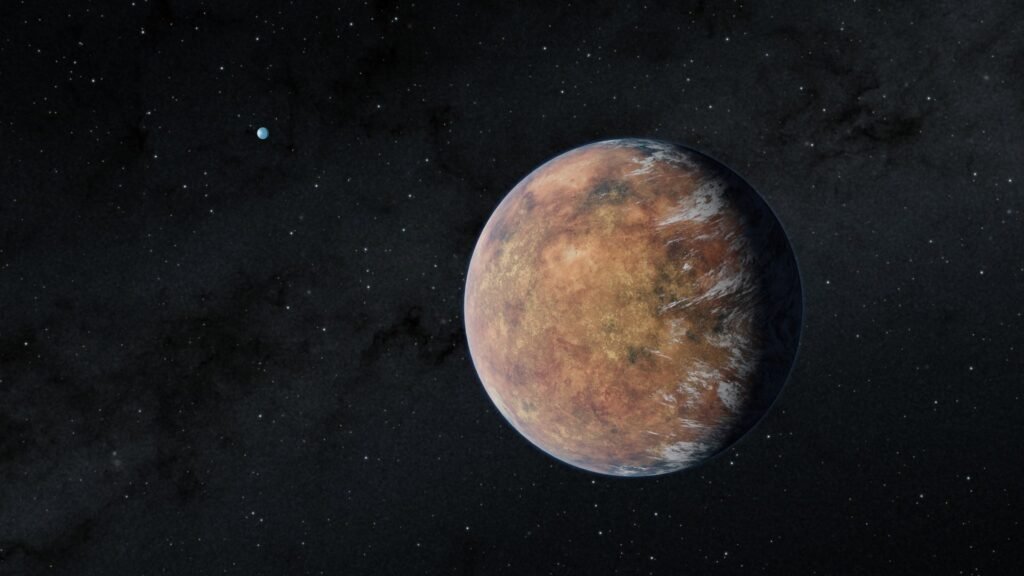Science is driven by our desire to understand things. In some cases, where it requires significant effort and investment to develop systems that can understand new things, science benefits from a game plan that the community of researchers focused on a particular niche can rally around, even if they don’t necessarily agree on the details. In astronomy and space science, those game plans typically take the form of Decadal Surveys, produced by the National Academies to define the path forward in a specialization or sub-field.
However, there are almost always follow-up reports that break down the suggestions from the Decadal Surveys into actionable plans that experts in the field then spend the next ten years executing on. One of those “tactical” plans was recently released on arXiv by the two lead scientists of NASA’s Exoplanet Exploration Program (ExEP), though it was listed as Rev H and released at least internally back in January 2025. In it, Drs. Karl Stapelfeldt and Eric Mamajek lay out 17 scientific goals that ExEP plans to work on over the next 3-5 years.
Many of those goals focus on “precursor science”, as the paper calls it, for the Habitable Worlds Observatory (HWO). HWO, a combination of LUVOIR and HabEx, two previously suggested large-scale space-based missions, was a key recommendation from the 2020 Decadal Survey, with a stated goal of characterizing 25 potentially habitable exoplanets during its lifetime. The Decadal Survey also suggested a “Technology Maturation Program” for great observatories that would work on de-risking technologies used in these massive telescopes to speed up their development cycle time.
Fraser discusses the future of exoplanet research.
But in order to understand the mission’s requirements for HWO to complete it’s goal of characterizing 25 potentially habitable exoplanets, some basic understanding of its targets must come first. Things like estimating the occurrence rates of temperate rocky planets (Gap #5) and understanding how many types of exoplanets different architectures will be able to detect (Gap #6). That yield estimation is also affected by other gaps in our knowledge, such as exozodiacal dust levels (Gap #11).
Understanding exoplanet atmospheres even before HWO begins its work is critical to its mission success, as three of the gaps show, though the first one (Spectroscopic observations of the atmospheres of small exoplanets) is specifically what HWO is designed to address. Modeling those atmospheres (Gap #2) and understanding the spectrographic properties of those atoms (Gap #13) will also play a key role in HWO’s success.
Interpreting the spectroscopic results and defining the formation patterns of both the planets and their host stars comprise many of the other goals. Whether that’s uncovering physical parameters of the planets (Gap #3) or determining the specific properties of their host stars (Gap #7), understanding what HWO is looking at before it even starts to look will be critical in correctly analyzing the data it produces.
HWO isn’t the only spacecraft tasks with searching for exoplanets, as Fraser explains.
Helpfully, the report lists out current mitigation strategies, and even links to different efforts to work on closing these gaps, such as the Exoplanet Opacity Database (Gap #2) and a challenge for data analysis of high-contrast ground-based imaging (Gap #3). If you’re interested in contributing to any of these efforts, this study provides multiple places to start.
Gaps in our knowledge are only one part of the bigger picture of space exploration. WIth a 47% cut to the Science Mission Directorate, such a drastic reduction in funds will obviously affect missions like the HWO. Though, it does seem like the paper’s two authors hadn’t joined the exodus of 4,000 NASA employees who opted to take the deferred resignation program in the last three months. As these budgeting and personnel changes play out, those who have a vested interest in the search for other habitable worlds will continue to keep a close eye on them, and hopefully use this paper as a guidebook to continue moving forward to finding their holy grail of a potentially habitable world.
Learn More:
K. Stapelfeldt & E Mamajek – NASA Exoplanet Exploration Program (ExEP) Science Gap List
UT – Is the Habitable Worlds Observatory a Good Idea?
UT – Research Work Begins on the Habitable Worlds Observatory
UT – HWO Could Find Irrefutable Signs Of Life On Exoplanets






